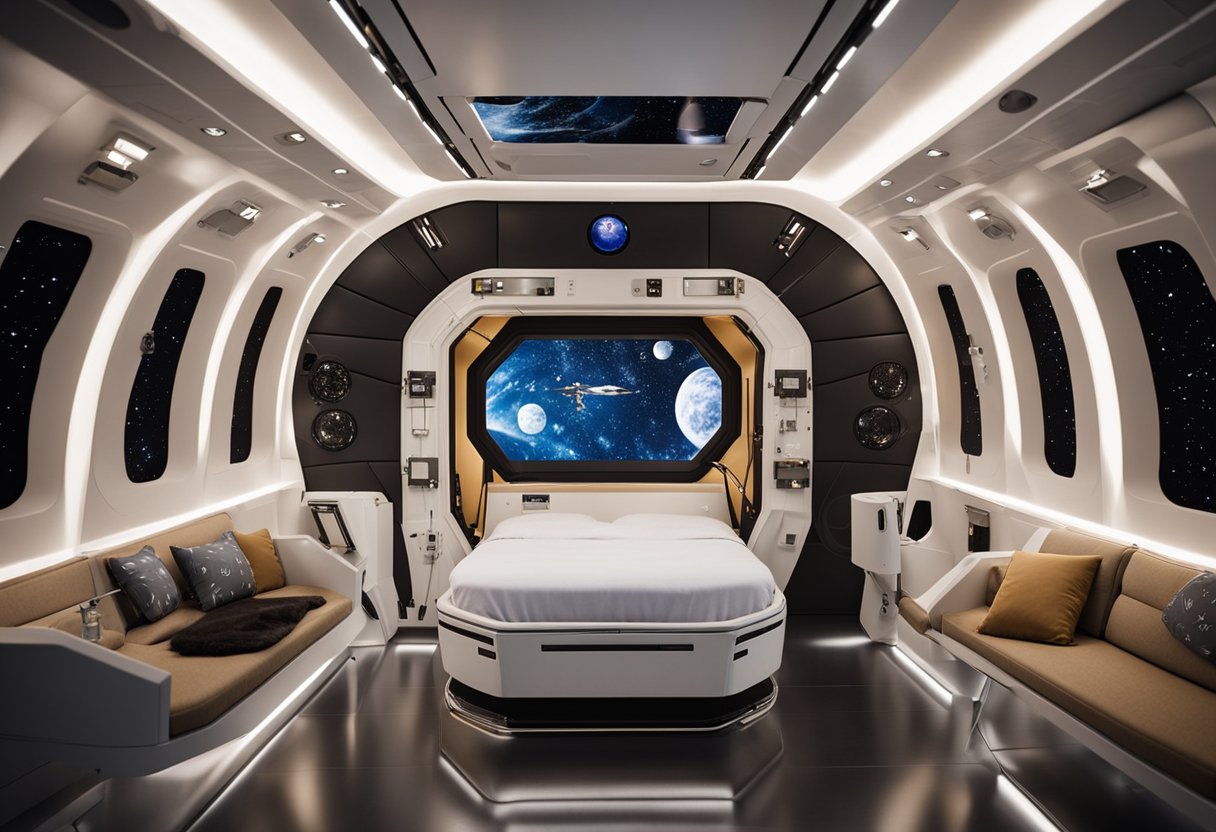
Spacecraft Design Innovations – Space travel has always pushed the boundaries of what is technologically possible, necessitating relentless innovation in spacecraft design. Our journey from the first satellite orbiting Earth to sending humans to the International Space Station has seen a series of dramatic changes. Current technological advancements are transforming spacecraft into versatile vehicles equipped to meet the demanding conditions of deep space and celestial bodies beyond our home planet. Developers must consider everything from propulsion and energy systems to the safety measures required to protect spacefarers from space debris and harsh cosmic elements.
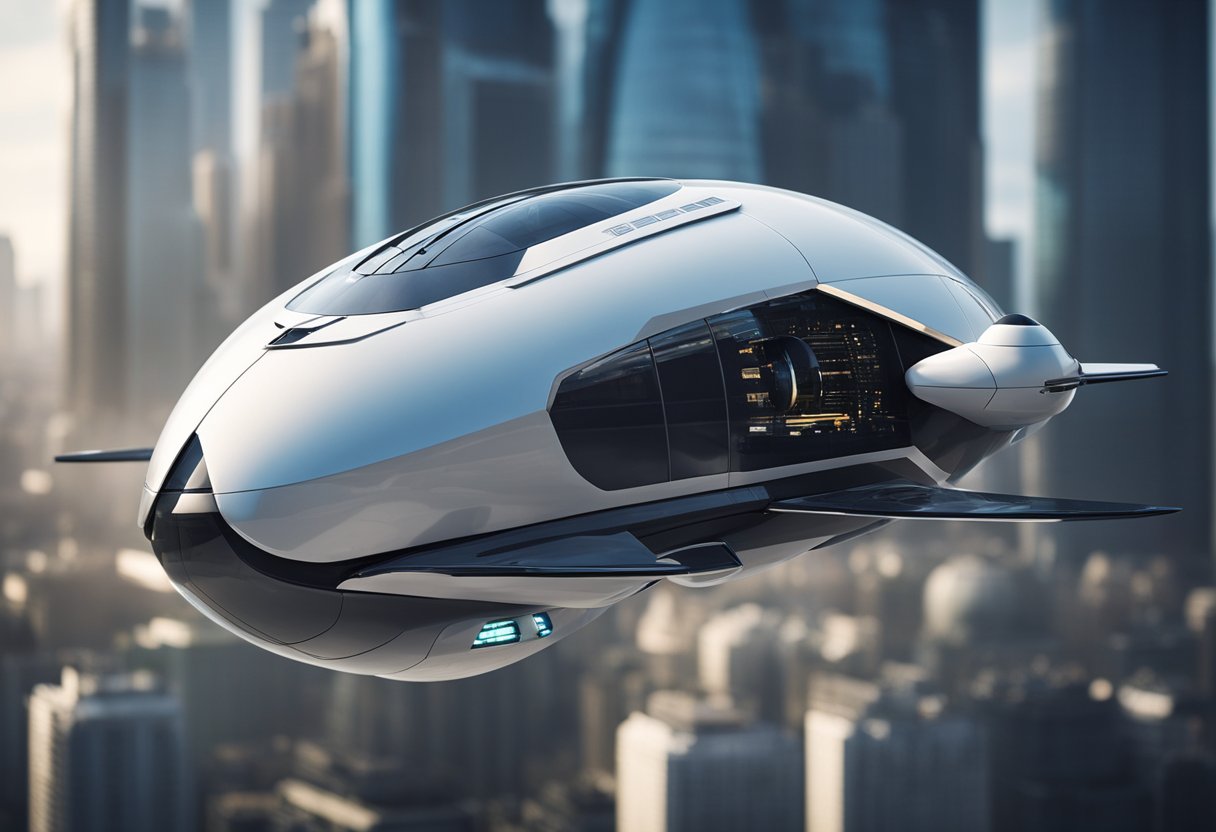
With ambitions pointing towards Mars and the prospect of space tourism drawing closer to reality, cutting-edge design features are now at the forefront of our voyage into the cosmos. The recent strides in technology have given us reusable rockets and advanced landing systems, contributing to both reduced costs and increased launch frequencies. Robust communication and navigation technologies have improved connectivity between Earth and spacecraft, ensuring safe and efficient missions. Furthermore, collaborations between nations and private entities are fostering a new era of space exploration that promises to be more inclusive and far-reaching.
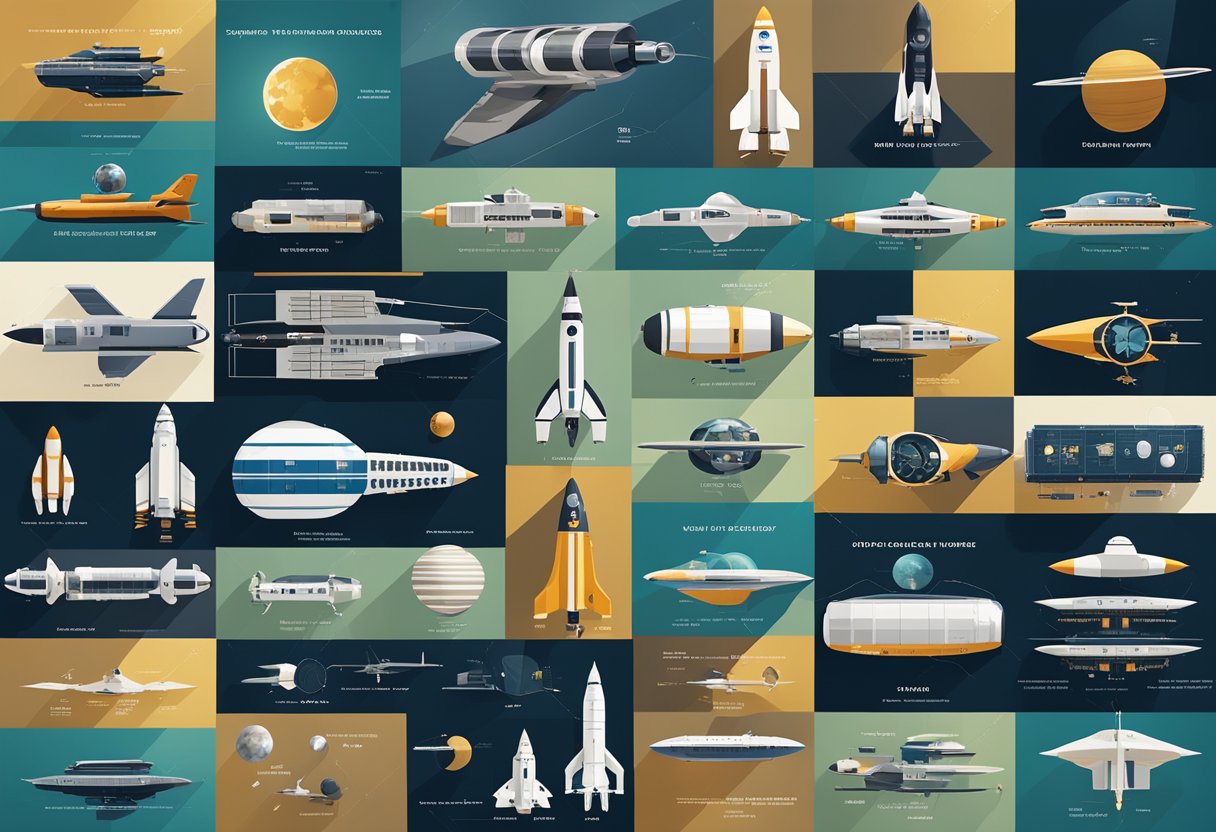
In tracing the trajectory of spacecraft design, we recognise a tapestry of technological triumphs and the pivotal roles played by major spacefaring entities in propelling humanity beyond the confines of Earth.
We’ve seen extraordinary leaps in spacecraft technology since the first successful venture beyond our atmosphere. It began with V-2 rockets, precursors to all modern rockets, and catapulted ahead with the launch of Sputnik in 1957. This event marked the commencement of the space age.
In the 1960s, the Mercury and Gemini programmes laid the groundwork for what would become Apollo, leading to the first human walking on the Moon in 1969. Advances kept coming, with the iconic Space Shuttle, a reusable spacecraft that facilitated construction of the International Space Station (ISS)—a symbol of international cooperation in space.
The recent entry of SpaceX into the space arena has revolutionised spacecraft design once more. With the development of the Falcon rockets and the Dragon spacecraft, their emphasis on reusability has significantly reduced the cost of accessing space.
NASA has been the vanguard of many of these developments, not just in human spaceflight but also in the design of unmanned probes to explore deep space. From the Hubble Space Telescope to the Mars rovers, NASA’s influence on spacecraft design is undeniable.
Across the pond, the European Space Agency (ESA) has been contributing to the architecture of spaceflight through missions like the Rosetta probe—the first to land on a comet.
Meanwhile, ventures like SpaceX have brought a commercial dimension to spacecraft design, with a focus on lowering costs and increasing accessibility. These endeavours have been conducive to the prospect of space tourism, as seen through emerging platforms such as SpaceVoyageVentures.com, which documents the burgeoning industry of civilian space travel.
Our exploration of space has come a long way since the early days of rocketry, guided by the vision and ingenuity of these pioneering organisations. The International Space Station stands as a testament to what can be achieved when nations unite in the pursuit of scientific advancement and exploration.
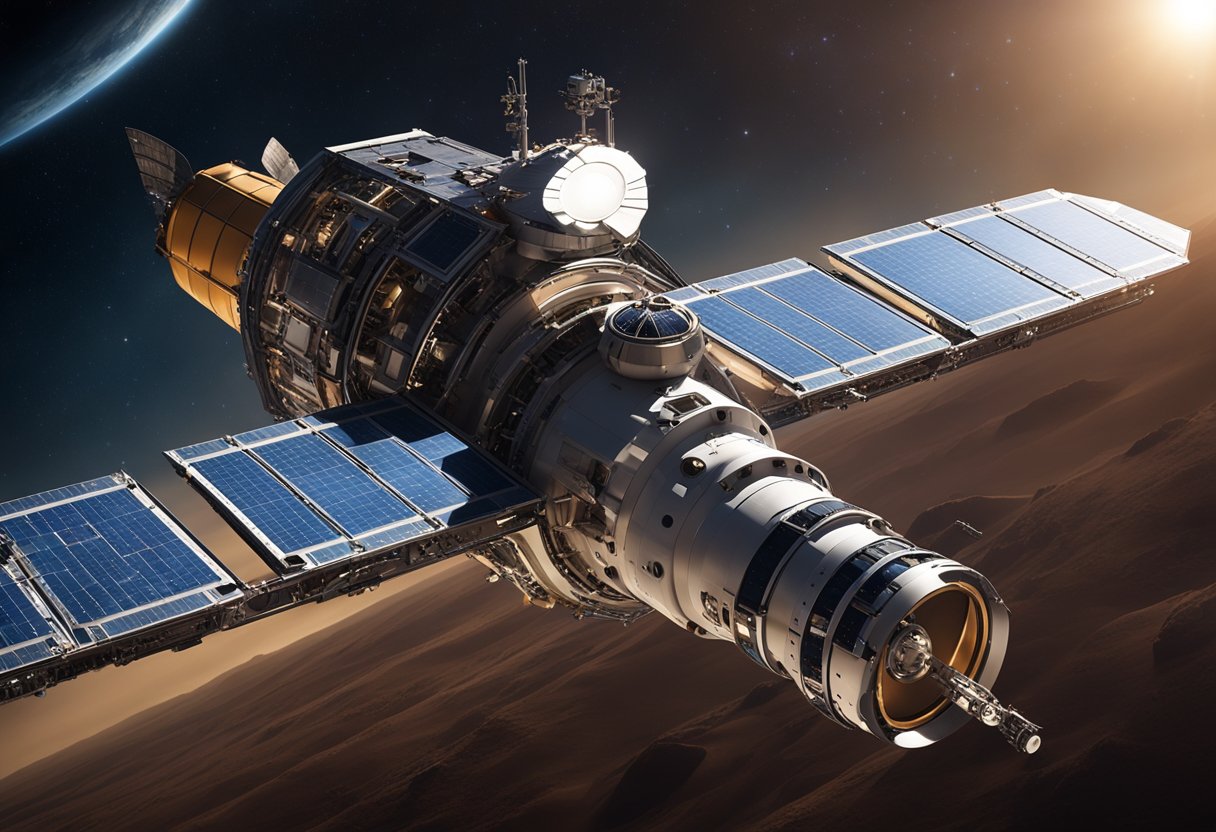
In crafting spacecraft, we diligently consider the design and integration of various systems essential for successful space missions. These foundational elements ensure the spacecraft can withstand the harsh conditions of space and effectively perform their intended functions.
Our spacecraft are structured to optimise strength while minimising weight, a critical factor in space where every kilogram counts. Aluminium and titanium alloys are frequently utilised for their favourable strength-to-weight ratios. Advances in composite materials, such as carbon-fibre-reinforced polymers, are also instrumental in augmenting structural integrity and reducing overall mass. The selection of materials directly influences the spacecraft’s ability to bear loads and resist the space environment while housing sensitive instruments securely.
Effective spacecraft propulsion is pivotal for manoeuvres such as orbit insertion, maintenance, and, when required, deorbiting. We employ a variety of propellant options, including monopropellants for less complex thrust needs and bipropellants for higher efficiency and control. The propulsion system encompass engines and thrusters that are carefully calibrated for specific mission profiles, ensuring the spacecraft can navigate the cosmos precisely.
Maintaining a controlled temperature aboard the spacecraft is non-negotiable for operational reliability. Our thermal control systems consist of passive and active elements. Among the passive elements, multi-layer insulation and heat shields serve as first lines of defence against extreme temperature fluctuations. Should the spacecraft require active thermal management, we incorporate systems like electrical heaters and fluid loops to dissipate or absorb heat as necessary.
Each component of the spacecraft’s systems, from the choice of propellant for propulsion to the use of advanced materials in construction, is meticulously considered and tested to uphold the mission objectives and ensure safety throughout the journey.
In recent years, we’ve witnessed significant strides in launch system technologies, restructuring the economics and accessibility of space exploration.
Launch vehicles have undergone a transformative evolution, with new designs focusing on increasing payload capacities and reducing costs. The Falcon 9, developed by SpaceX, represents a leap forward in rocket engineering, thanks to its partially reusable architecture. This innovation has not only enhanced the efficiency of launch operations but also paved the way for more sustainable mission designs.
The concept of reusable launch systems is no longer a mere aspirational goal. Present-day rockets, like the Falcon 9, boast a first stage that can return to Earth and be refurbished for subsequent flights. This key development has been revolutionary, significantly cutting launch costs and bolstering the frequency of access to space. Moreover, the emergence of reusable rockets is playing a crucial part in burgeoning industries, such as space tourism, with companies like SpaceVoyageVentures.com actively documenting and promoting such potentially groundbreaking journeys.
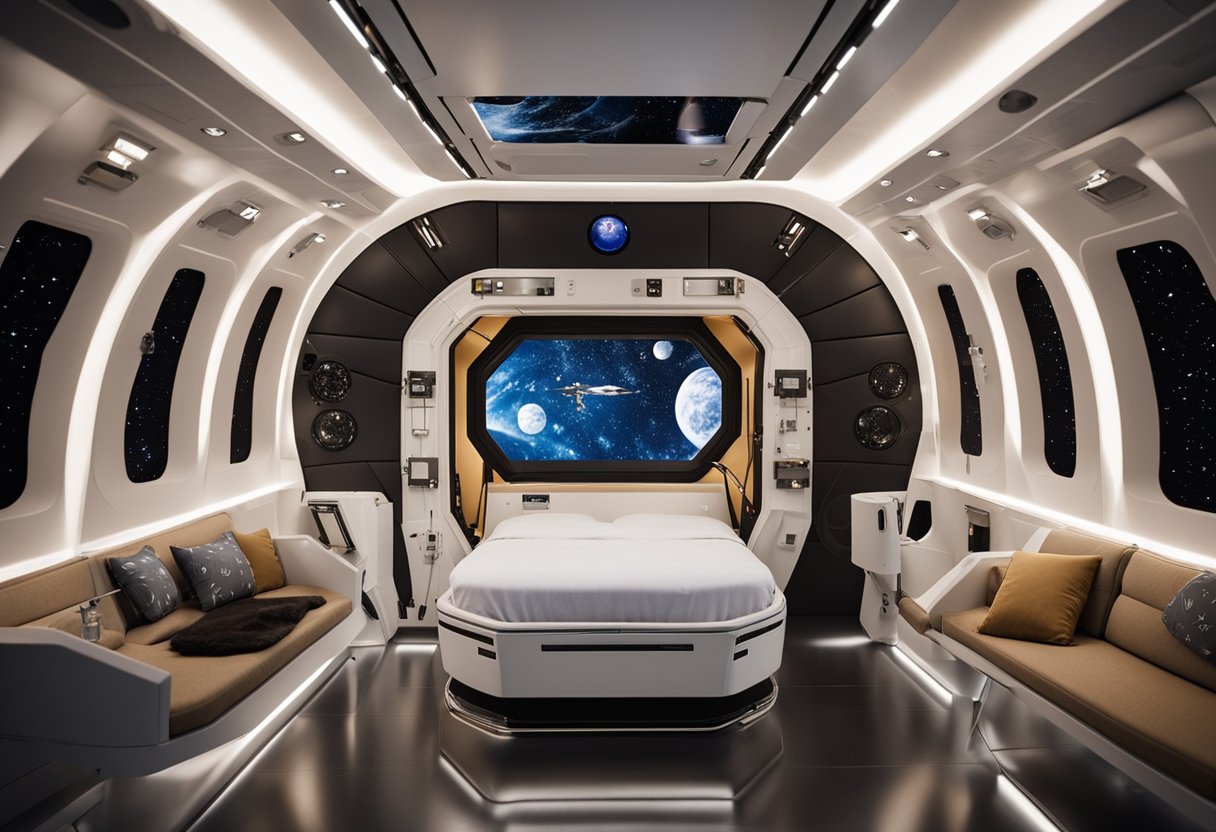
In designing crewed spacecraft, the integration of advanced life support systems and robust safety measures are paramount. We focus on ensuring the crew has access to necessary amenities for long-duration missions and incorporate fail-safes for potential emergencies.
The Orion spacecraft, like others destined for deep space exploration, is equipped with state-of-the-art life support systems. These systems are designed to rigorously regulate the onboard atmosphere, ensuring that oxygen levels remain consistent and carbon dioxide is removed effectively. Water recovery and management systems play a critical role as well, recycling fluids for various uses.
Accommodations within the spacecraft are crafted to meet the daily needs of the crew. Sleeping quarters, workstations, and communal areas are arranged to maximise comfort and functionality. Space is at a premium, so the layout is meticulously planned to allow for a range of activities, from scientific research to exercise, which is vital for maintaining crew health.
Safety is embedded into every layer of spacecraft design. Emergency systems on Orion and similar vessels are engineered to address potential hazards such as cabin depressurisation or fire. Escape protocols are in place, including lifeboats capable of returning the crew to Earth in the event of a severe incident.
The spacecraft’s structure itself is fortified against the rigours of space travel, such as radiation and micrometeoroid impacts. Moreover, redundant systems and automated health monitoring ensure that if one component fails, another can take over, and the crew is warned of any issues promptly.
Our commitment to safety and habitability in the hostile environment of space not only supports the aspirations documented on SpaceVoyageVentures.com but also paves the way for future space tourism.
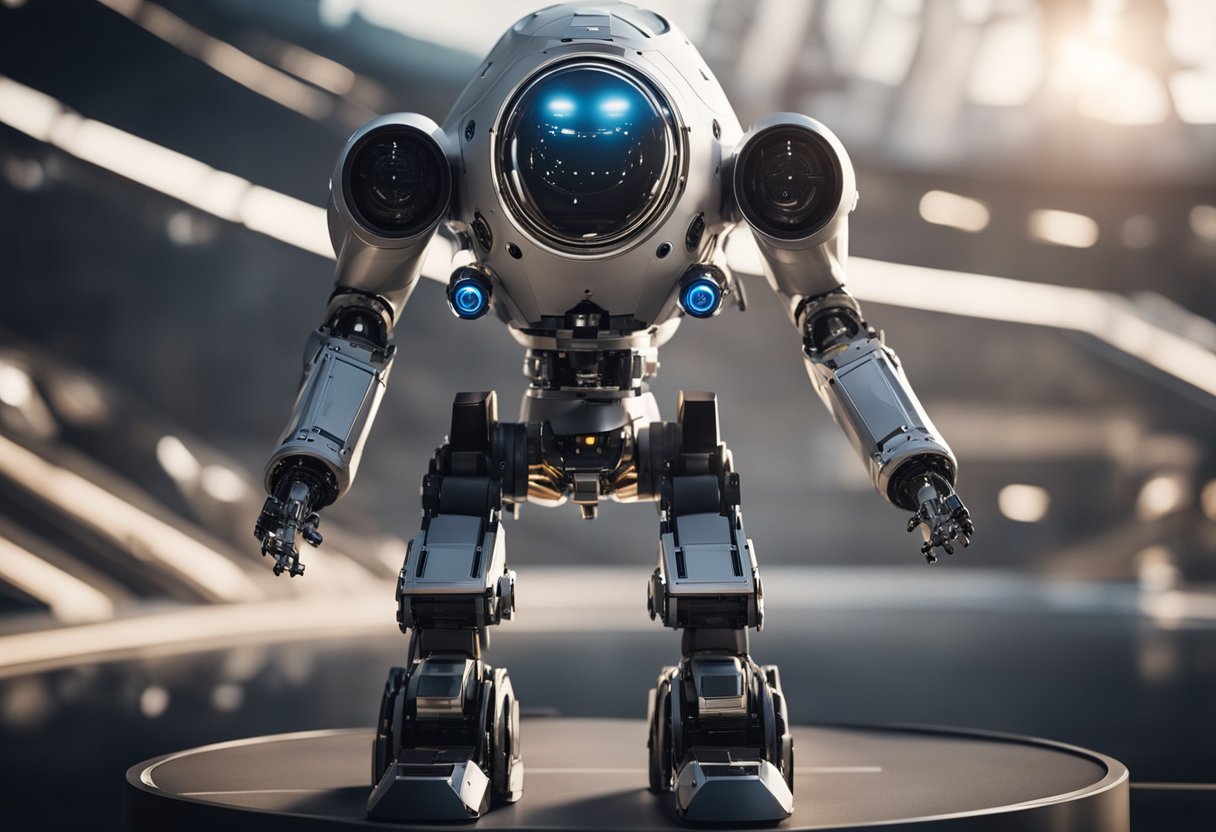
The evolution of space technology has been characterised by significant advances in robotics and autonomous systems. These systems are not only enhancing our exploration capabilities but are also reshaping spacecraft design.
In the realm of space exploration, artificial intelligence (AI) plays a pivotal role. It allows us, as a species, to extend our reach to the stars with more sophisticated tools. AI-driven technology has the potential to navigate spacecraft, manage on-board systems autonomously, and process data far more efficiently than traditional methods. Our ability to explore and understand the cosmos is expanded through AI’s ability to make decisions in real-time, which is fundamental when communication delays with Earth-bound teams are factored in.
An illustration of AI’s impact can be seen through space tourism ventures, where AI ensures the safety and efficiency of the journeys. Websites like SpaceVoyageVentures.com exemplify how AI contributes to the feasibility of tourist expeditions beyond Earth.
Our advancement in rover and probe technologies has been nothing short of revolutionary. Autonomous rovers, such as those deployed on Mars, rely heavily on robotics and autonomy to navigate and conduct scientific research in environments that are otherwise inaccessible to humans. The integration of AI into these rovers enables them to make smart paths through treacherous terrain and conduct sophisticated analyses of planetary surfaces, which is vital for tasks ranging from collecting samples to scouting for signs of past life.
To illustrate, the agility and effectiveness of these technologies can be acknowledged in missions like the Mars Rover expeditions, wherein their capabilities to withstand extreme conditions and autonomously perform crucial tasks are ground-breaking. The autonomy of space robots is continually improved upon to overcome the challenges faced in the unyielding conditions of space.
In the realm of aerospace engineering, significant strides have been made in the domains of communication and navigation. These advancements ensure reliable data transmission and precise positioning, essential for the success of both crewed and uncrewed missions beyond Earth’s atmosphere.
Our connection to spacecraft in deep space heavily relies on the Deep Space Network (DSN). It is a collection of large antennas and communication facilities spread across the globe that support interplanetary spacecraft missions. The DSN also contributes to radio and radar astronomy observations for the exploration of the solar system and the universe. Its capability for continuous communication is vital for navigation and the transmission of scientific data.
Navigation, particularly in the challenging environment of deep space, demands highly precise instruments. These instruments must be resilient enough to operate in extreme conditions over vast distances. We have seen innovations like more compact deep space transponders, smaller yet more powerful onboard computers, and advanced software that can autonomously guide spacecraft. The integration of GPS technology into our spacecraft allows for accurate location tracking, critical for manoeuvring and establishing a precise course to a destination.
Laser communication technology is another leap forward, offering the potential for faster data rates than traditional radio frequency systems. This is crucial for high-bandwidth applications such as live video streaming or transmitting large amounts of scientific data back to Earth. We are pioneering these technologies to enhance our missions and contribute to initiatives like SpaceVoyageVentures.com, where the future of space tourism hinges on reliable communications and navigation systems.
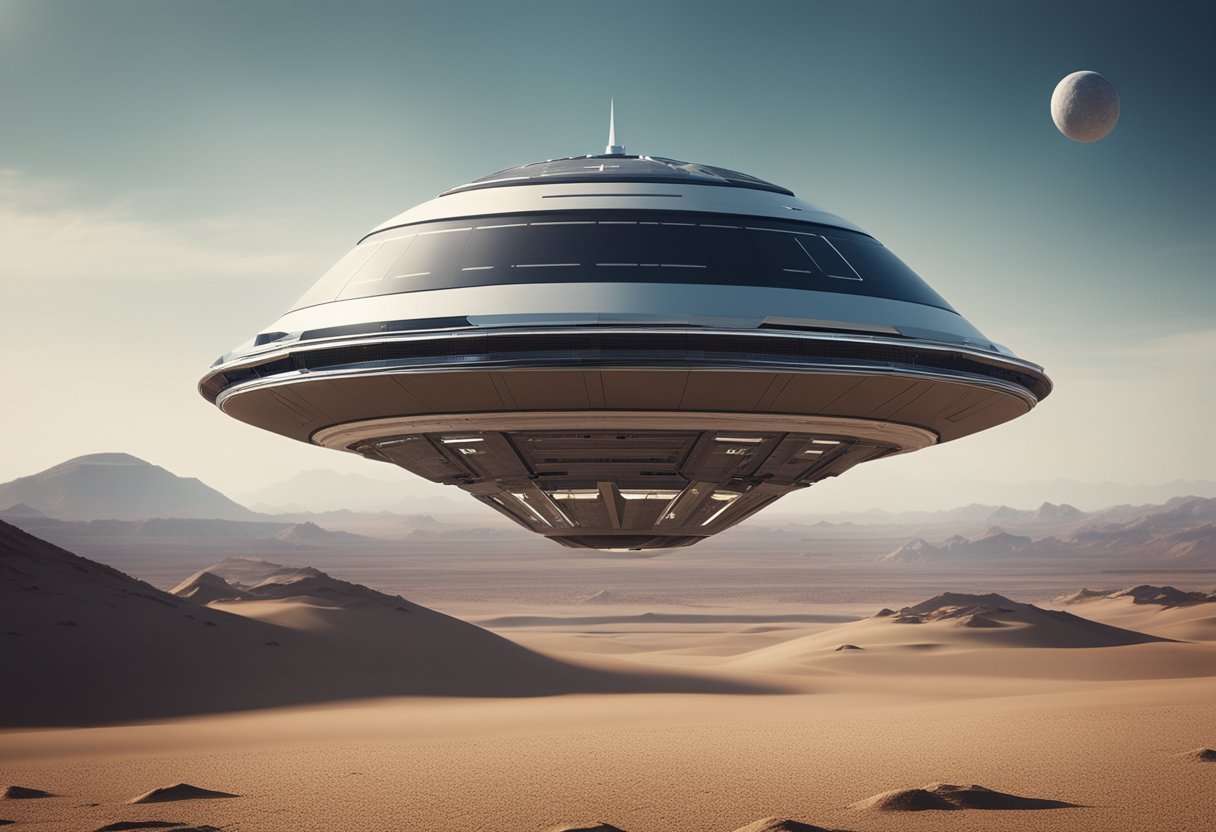
In our focus on extraterrestrial exploration, we are witnessing an unprecedented era in spacecraft design innovations, tailored for missions that go beyond our familiar terrestrial bounds.
The trajectory of our space exploration endeavours has been significantly marked by missions to Mars and the Moon. Our Martian ventures have centred on advanced rovers like NASA’s Perseverance, which employs cutting-edge technologies to examine the Martian surface, seeking signs of ancient life and collecting samples for eventual return to Earth. In parallel, lunar missions have gained fresh impetus, particularly with the Artemis program’s aim to establish a sustainable human presence on the Moon. This includes the development of the Lunar Gateway, a space station in lunar orbit serving as a multi-purpose outpost to support exploration and scientific studies.
Lunar Missions:
Mars Missions:
Our goals extend to orchestrating manned missions that will rely on resilient and versatile spacecraft, essential for secure astronaut transit and the establishment of extraterrestrial habitats, as detailed in a strategy overview by the Resilient ExtraTerrestrial Habitats Institute.
Turning our gaze to Venus, we confront a hostile environment with surface conditions that are incredibly challenging for spacecraft survival. Nevertheless, our pursuit of understanding our neighbouring planet is crucial, as evidenced by missions like the proposed VERITAS, intended to map Venus’s surface in fine detail.
Expanding the scope of our planetary studies, the drive to understand the stars and our place amongst them persists. Our endeavours include the launch of next-generation telescopes capable of peering into the cosmos with unprecedented clarity, thus enhancing our understanding of planetary formations and the broader universe.
Venus Missions:
Stellar Studies:
Our participation as SpaceVoyageVentures.com in this bold epoch reflects our growing capabilities and the potential for space tourism, as we document the strides being made in opening the cosmos for future explorers.
As we traverse this path, it becomes evident that our efforts in space exploration are not merely pursuits of curiosity but stepping stones towards a broader understanding of the cosmos and our place within it.
We live in an era where advancements in propulsion and energy systems are pivotal for the sustainability and the expansion of space travel. Cutting-edge propulsion technologies not only enhance the capabilities of spacecraft but also open new possibilities for exploration and commercial space ventures.
Electric and solar propulsion systems utilise electric power to accelerate propellants like xenon at high velocities, which offers a more efficient alternative to conventional chemical rockets. This ion propulsion has already seen use in various missions, whereby efficiency is significantly higher when compared to traditional propulsion methods. Notably, the use of solar panels to provide the necessary energy has been an elegant solution for long-duration missions, making deep space exploration more viable as fuel needs are minimised.
Turning our focus to nuclear propulsion, we observe a method that could potentially offer higher efficiency and speed compared to chemical propulsion systems. Concepts such as nuclear thermal propulsion (NTP), which heats hydrogen to generate thrust, offer a propulsive efficiency (specific impulse) several times that of conventional rockets. Furthermore, the exploration of nuclear electric propulsion (NEP), where nuclear energy is converted into electrical energy that then drives an electric thruster, stands to unlock longer and more distant space journeys. The development of these technologies aims to use fuel such as uranium or methane in a more efficient manner, hence greatly improving the sustainability aspect of spacecraft design.
Our understanding and implementation of innovative propulsion and energy systems will continue to evolve, fuelled by the growth in commercial space entities and an increasing interest in exploring and utilising space for a variety of purposes, including space tourism as documented by SpaceVoyageVentures.com.
In addressing the challenges posed by space debris, specific strategies for debris mitigation and advanced collision avoidance technologies are critical, especially in low Earth orbit where traffic is increasing.
We recognise that the density of debris in low Earth orbit (LEO) poses a significant risk to spacecraft, including those involved in burgeoning space tourism ventures like SpaceVoyageVentures.com. Some of the key strategies for debris mitigation include:
For instance, IADC guidelines focus on limiting debris creation through such measures related to spacecraft design and operation.
We are committed to the advancement of collision avoidance technologies to protect our spacecraft and those we engage with in LEO. Our approach includes:
Such systems are intrinsic to NASA’s efforts, as detailed in the NASA Best Practices Handbook, which is designed to coordinate in-orbit activity safely.
We maintain clear protocols and incorporate state-of-the-art technologies to safeguard our missions and contributions to a sustainable space environment.
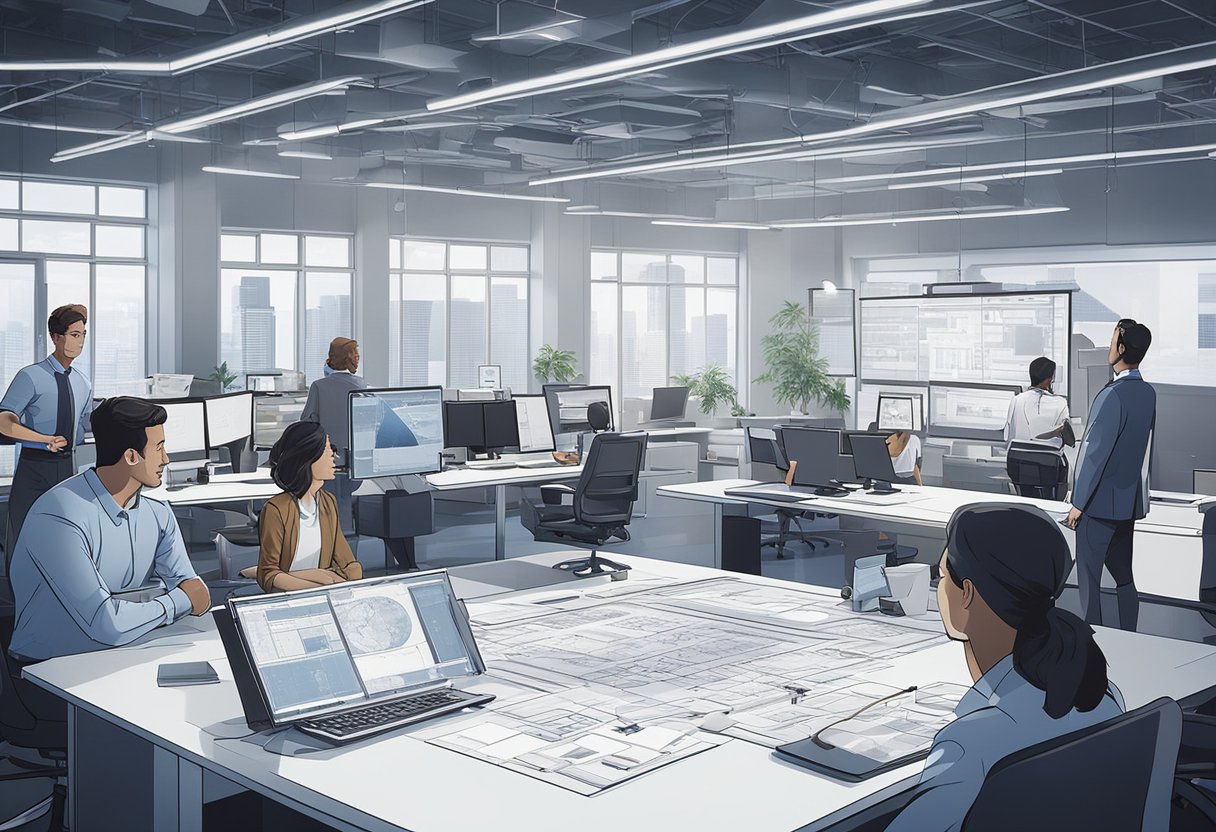
Space exploration has reached an era where collaborative efforts have become instrumental in advancing our capabilities beyond Earth’s orbit. We see a consortium of diverse entities, ranging from national space agencies to pioneering private companies, forging alliances that shape the frontier of space technology and exploration.
The International Space Station (ISS) stands as a testament to what can be achieved through international cooperation. With contributions from NASA, Russia‘s Roscosmos, Japan‘s JAXA, the European Space Agency (ESA), and others, the ISS serves as a symbol of unified human aspiration in space. It operates as a microgravity laboratory where scientists conduct research that benefits humanity and advances the field of space exploration.
Beyond the ISS, there are various significant international endeavours. For instance, the Artemis program, spearheaded by NASA, invites international partners to return humans to the Moon and eventually to Mars. This endeavour welcomes not only the expertise and resources of established space-faring nations but also encourages participation from emerging space nations.
In recent years, public-private partnerships have transformed the space industry. Our collaborative efforts with companies like SpaceX, Boeing, and Blue Origin have expedited innovation and reduced costs through competition and shared investment. SpaceX, for example, has become a crucial player by providing cargo resupply services to the ISS and developing the Crew Dragon spacecraft to transport astronauts, highlighting the efficiency and ingenuity that the private sector can offer.
Additionally, we have been witnesses to the nascent sphere of space tourism, with businesses like Blue Origin and SpaceX introducing ventures that promise to make space more accessible to private individuals. Websites such as SpaceVoyageVentures.com document our progress towards this novel industry, showcasing currently available experiences and those soon to be within reach.
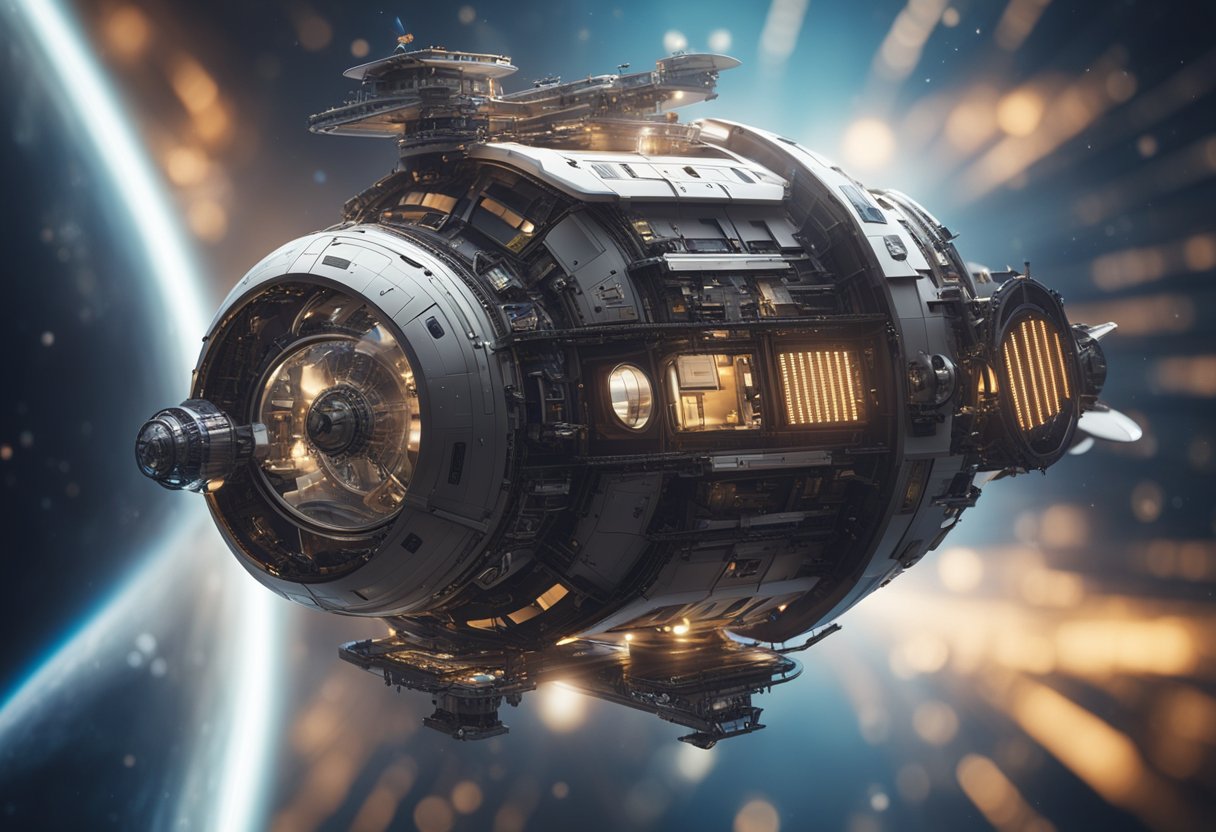
In exploring the frontier of space, we constantly push the boundaries of what’s possible in spacecraft design. We’ve made significant advancements, from the propulsion systems to the onboard living quarters, and we continue to develop software that enables us to simulate and refine future space vessels. Let’s address some common questions regarding the innovations that are shaping the way we design spacecraft today.
Recent developments in propulsion technology have led to more efficient and powerful engines. For instance, electric propulsion systems have made strides in providing greater thrust with lower fuel consumption, a crucial factor for deep-space exploration.
Spacecraft interior design has been refined to maximise limited space, ensuring astronauts can live and work comfortably for extended periods. Innovations like modular design elements that can be reconfigured for different missions and the incorporation of ergonomically designed furniture and workstations have enhanced life aboard spacecraft.
Leading software tools such as those used in Model-Based Systems Engineering (MBSE) are integral to spacecraft design. These allow for comprehensive simulation and analysis across the entire project lifecycle, streamlining the design process and predicting potential issues before they arise.
The process typically follows an iterative loop: starting with the conceptual design, progressing through detailed design and development, then moving on to testing, and finally, deployment. Each phase relies on extensive collaboration across a gamut of engineering disciplines to meet the mission’s requirements.
A career in spacecraft design generally requires a strong foundation in STEM subjects, with aerospace engineering, mechanical engineering or physics being preferred degrees. Additional qualifications might include specialised training in systems engineering and hands-on experience with spacecraft design projects.
Advancements in materials science have been pivotal in creating structures that can withstand extreme temperatures and radiation in space. New composite materials and alloys have been developed that are lighter, stronger, and more adaptable to the harsh conditions encountered during space missions.